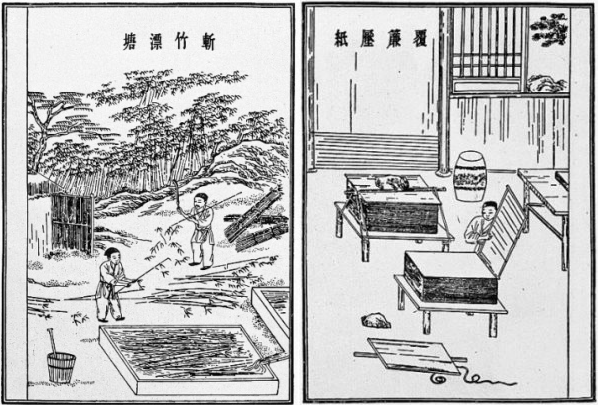Figure 1: Chinese woodprints of the papermaking process (Wikimedia Commons)
Cellulose is one of the most abundant organic compounds on earth and utilized in applications as diverse as textiles, papermaking, food packaging, filtration, drug delivery systems, wound care products, nanocomposites, bone tissue engineering, and countless others. Cellulose is a fibrilar and semi-crystalline biopolymer which may be plant-derived or bacterial-derived, and generally exhibits remarkable mechanical properties as well as desirable biodegradability, biocompatibility, renewability, chemical stability, and cost effectiveness. [1]
Cellulose is notoriously difficult to process. Up until approximately 300 million years ago, there were no significant microorganisms capable of digesting cellulose—resulting in a high accumulation of organic matter. During this “carboniferous” period, the production of coal derived from biomass was 600 fold higher than estimated rates of production in modern day. [2]
Molecular Weight Analysis of Cellulose
As polymer and material scientists, we rely in fundamental measurements of polymer properties to understand the material performance in demanding circumstances. Typically, this includes measurement of the polymer molecular weight—however, this is a highly challenging measurement to obtain for un-modified cellulose materials. Simply put, cellulose doesn’t dissolve in most solvents as a consequence of its crystalline structure, hydrogen bonding, and hydrophobicity.
CPG has developed workflows for the molecular weight analysis of cellulose materials, including un-modified cellulose. Samples are carefully prepared in a series of matrix-modifying steps before ultimately being dissolved in an aprotic solvent and in the presence of high inorganic salt concentrations. Once in solution, the cellulose materials are analyzed by triple detection GPC for absolute measurement of the polymer molecular weight as well as structural characterization. By obtaining such fundamental measurements of molecular weight and structure, cellulose products may be evaluated for (bio)degradation, aging, failure analysis, material compatibility, lot-to-lot consistency, among other properties. Contact CPG for additional information on the material characterization of cellulose or other biopolymers.
[1] A. Amalraj, S. Gopi, S. Thomas, and J. T. Haponiuk, “Cellulose Nanomaterials in Biomedical, Food, and Nutraceutical Applications: A Review,” Macromolecular Symposia, vol. 380, no. 1, p. 1800115, 2018.
[2] P. Ward and J. Kirschvink, A New History of Life: The Radical New Discoveries about the Origins and Evolution of Life on Earth. Bloomsbury Publishing, 2015.

